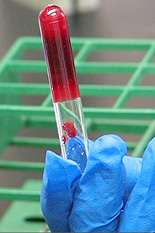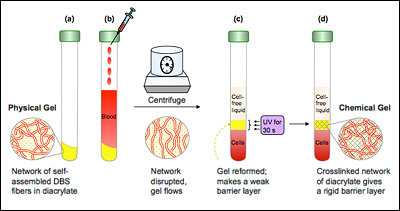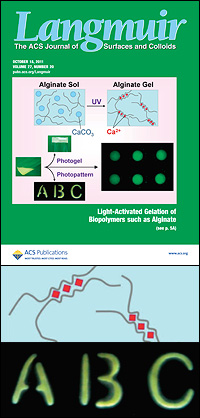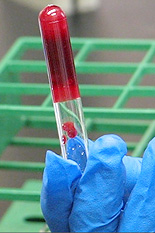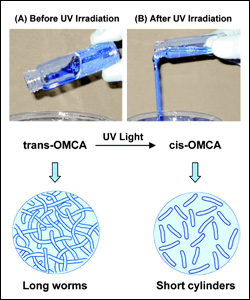News Story
Blood-Clotting "Nano-Velcro" Featured in C&EN
The award-winning, blood-gelling technology and related wound care products created by Department of Chemical and Biomolecular Engineering (ChBE) professor Srinivasa Raghavan and alumnus Matthew Dowling (Ph.D. '10, bioengineering, formerly advised by Raghavan) were recently featured in Chemical and Engineering News (C&EN), the weekly news magazine of the American Chemical Society (ACS).
The article, "Molecular Velcro Stems Bloodflow," covers a contributed talk Raghavan delivered at ACS' national meeting in Denver, Co. on August 29, in which he discussed the findings of a paper he and Dowling published in Biomaterials in May.
Dowling's and Raghavan's technology centers around hm-chitosan, a specially modified version of the naturally occurring bipolymer chitosan. Hm-chitosan's hydrophobic tails are designed to act as nano-"hooks" that attach to blood cells and platelets, causing them to clump together and adhere to tissue. The gelling effect is strong enough to quickly control bleeding in wounds ranging from simple cuts to those that are large, deep, or irregular. It can also easily be reversed to prevent dangerous blood clots. Products made with hm-chitosan are also gentle enough to be removed from the patient without causing further injury.
Dowling currently serves as the CEO of Remeduim Technologies, a company working to commercialize the patented technology. Products under development include a surgical spray, bandage, and foam.
Read "Molecular Velcro Stems Bloodflow" online at C&EN »
Learn More:
Visit Professor Raghavan's Complex Fluids and Nanomaterials Group web site »
Visit the Remedium Technologies web site »
Published August 30, 2011
